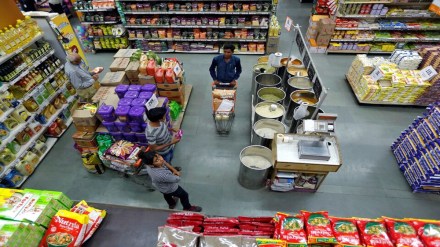By Shweta Saini
The government has abolished export duties on onion, removing all restrictions imposed since December 2023. Similarly, it had recently lifted curbs on rice exports initiated earlier. Shweta Saini explains what’s behind the frequent changes and why a more long-term vision is warranted
How do duty changes reflect in agricultural trade?
During the 2007-08 food inflation crisis, the Centre imposed long-term export bans on rice, wheat, and pulses, which were lifted only after two-three years. The government was criticised for policy rigidity. In contrast, policymakers have shown agility of late. The notifications are for shorter durations and their review dates are aligned with crop cycles. But how much government is too much is a question to ask.
Also, besides a few crops and commodities like rice and marine products where India is still a predictable and consistent exporter, for all other commodities like chana (gram), onions, sugar, wheat, and soya bean meals, we have exported only during years when we recorded surpluses. So structurally, India is not a consistent exporter of all crops. There are many possible reasons for this. These include losing our gross cropped area due to urbanisation, or climate impact, losing yields to unfavourable climatic or pest conditions, plateauing yields and changing domestic consumption patterns, or just the medium- or long-run impact of too much (or too less) government interventions or interferences.
Is there a consumer bias in onion export curbs?
We did a study of 19 agri-crops and commodities between 2000 and 2020, and found farmers were net taxed (up to 14%) and policies had a greater consumer bias. But policies are a response to a system that is not functioning. Crops like onion have a predictable cycle. A bumper year and low mandi (market) prices are followed by lower acreages in the next seasons and a lower crop pulling up price. Higher prices encourage higher acreages and the cycle continues. For a typical commodity like onion, a farmer earns a good sum usually every 1.5 to two years. But if the crop cycle is so predictable why isn’t there a solution for periods of glut and deficit? Two low-hanging fruits are processing and storage. While much investments have gone into creating kanda chawls or storages, processing has seen little progress, albeit due to low demand.
Can a sense of likely prices help?
Under agriculture, policies are mostly reactive in nature. The government needs to have a medium- to long-run vision and have rules, wherever possible, for deviating from the vision. For example, unless edible oil inflation exceeds by x%, the market should know that the government would not interfere. Similarly, if imported tur lands at Indian ports below the minimum support price, importers should know that the government would change tariffs or impose restrictions. Some predictability in operations is critical for all stakeholders, including farmers.
Also, if surpluses do not exist sustainably or if the policy environment is unpredictable, the performance of agri-exports is likely to vary. If production is unstable, then it appears apt for policymakers to prioritise domestic consumers over global ones and domestic food requirements over fuel or even feed.
What should govt policy look like?
The food, feed, and fuel needs for the agriculture sector are changing and simultaneously growing in India, which has the largest population in the world. As a result, demands from farmers and farming are evolving too. At the same time, agricultural land is shrinking, yields are plateauing or falling in most crops across key states, climate change is affecting more crops than anticipated, and newer pests are developing. The government has to invest in improving yields and bringing some level of resilience to crops. By creating and managing sustainable crop surpluses, problems of ad hocism in trade policies can be addressed. The role of a medium- to long-run agri policy cannot be overemphasised. To achieve the Centre’s goal of doubling farmer incomes, India must adopt a long-term, predictable trade policy based on rule-based interventions. This will not only give farmers and exporters confidence to invest in global markets but also ensure consumer interests are safeguarded through well-calibrated adjustments.
Domestic impact on pulse prices
Compared to March 2024, all-India gram prices in March 2025 (as of March 26) are higher by about 6.3% at retail, and 9.53% at wholesale levels, but at mandi levels the prices are about 2% lower. Even though the gram crop is likely to be higher by about 0.5 million metric tonnes compared to last year, pipeline stocks are studied to be tight but filling up fast. Yellow peas, in a limited sense, is like the palm oil of yesteryear; it is substituting demand for gram. In the process it becomes an adulterant (besan and split tur), and due to their similarity it is being sold by mixing with tur dal. For sure, continuing imports of yellow peas affect not just the domestic yellow pea growers (cultivated mostly in Uttar Pradesh as a rabi crop) but also farmers of gram and tur. But again, the issue is one of immediate priority — between farmers and consumers. Consumer price index inflation for gram in February was about 12%, building on a double-digit inflation in February 2024.
The writer is founder & CEO of Arcus Policy Research.
Disclaimer: Views expressed are personal and do not reflect the official position or policy of FinancialExpress.com. Reproducing this content without permission is prohibited.
